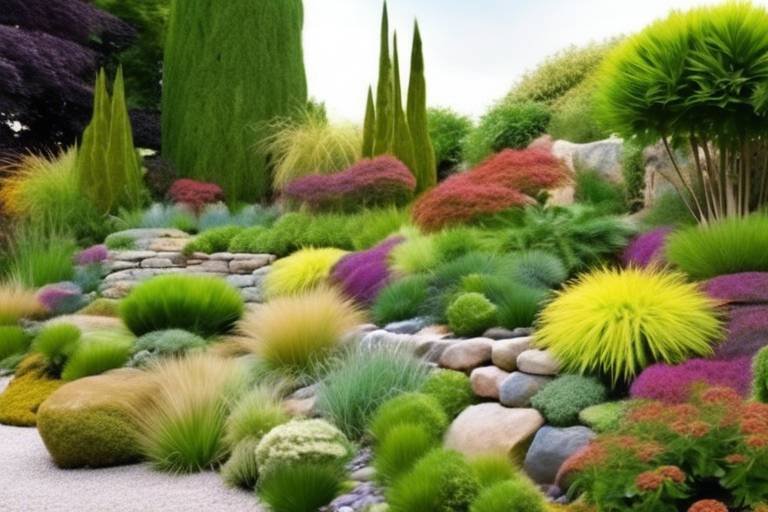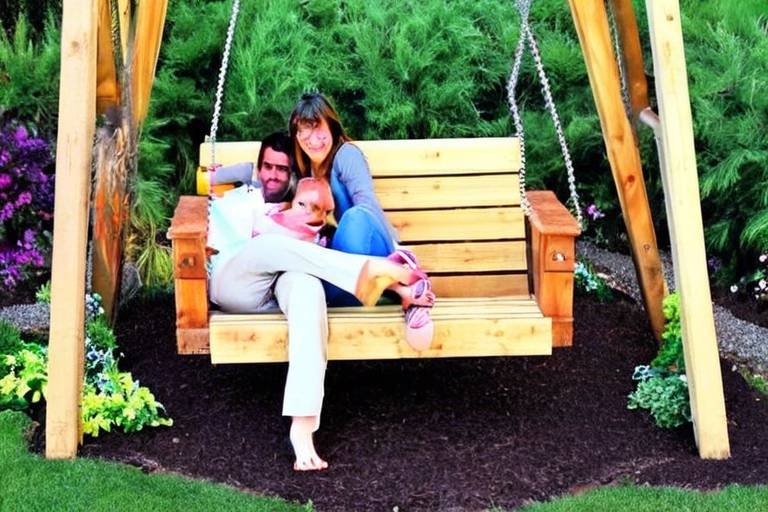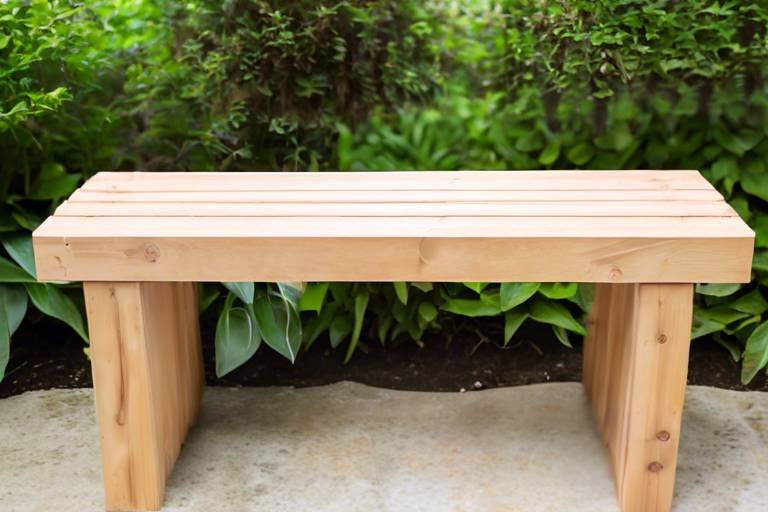How to Create a Small Garden for Fresh Produce
Creating a small garden for fresh produce can be a rewarding and fulfilling experience. Not only does it provide you with an abundant supply of fruits and vegetables, but it also allows you to connect with nature and enjoy the satisfaction of growing your own food.
When embarking on this journey, the first step is to choose the right location for your small garden. Look for a spot that receives ample sunlight throughout the day and is easily accessible to water sources. Sunlight is crucial for the growth of plants, so make sure your garden gets at least 6-8 hours of sunlight daily.
Once you've selected the perfect location, it's time to plan the layout of your small garden. Designing the layout effectively can help you maximize the space available and optimize the growth of your plants. Consider using raised beds or container gardening to make the most of limited space.
Next, carefully select the plants that you want to grow in your small garden. Choose fruits and vegetables that thrive in small garden environments, such as tomatoes, peppers, herbs, and salad greens. Consider the climate and growing conditions in your area to ensure successful growth.
Preparing the soil is a crucial step in setting up your small garden for success. Ensure the soil is well-draining and rich in nutrients by adding compost or organic matter. Good soil quality is essential for optimal plant growth and productivity.
Planting and caring for your garden requires attention to detail. Follow guidelines on planting depths, spacing, watering schedules, and fertilization to ensure healthy plant growth. Regular maintenance, including weeding and pest control, is essential for a bountiful harvest.
Dealing with pests and diseases organically is key to maintaining a healthy small garden. Learn to identify common pests and diseases early on and implement natural control methods to protect your plants without harmful chemicals.
Harvesting your produce at the right time is crucial for enjoying the freshest and most flavorful fruits and vegetables. Pick fruits when they are ripe and vegetables when they reach the desired size for the best taste and nutritional value.
Seasonal maintenance and succession planting are essential for continuous yields in a small garden. Regularly maintain your garden by pruning, mulching, and replenishing nutrients in the soil. Succession planting involves planting new crops as soon as one crop is harvested to ensure a constant supply of fresh produce.

Choosing the Right Location
Setting up a small garden to grow fresh fruits and vegetables at home can be a rewarding and fulfilling experience. Not only does it provide you with a sustainable source of fresh produce, but it also allows you to connect with nature and enjoy the process of nurturing plants from seed to harvest.
When it comes to creating a small garden, choosing the right location is crucial for the success of your plants. You'll want to select a spot that receives an adequate amount of sunlight, typically at least 6-8 hours per day, as most fruits and vegetables require sunlight to thrive. Additionally, ensure that the location has easy access to water, either through a nearby water source or a convenient watering system.
Consider the layout of your outdoor space and choose a location that is not prone to strong winds or extreme temperatures. Sheltered areas can help protect your plants from harsh weather conditions and promote healthy growth.
If you're limited on outdoor space, don't worry! You can still create a small garden on a balcony, patio, or even indoors near a sunny window. Just make sure to provide artificial light if natural sunlight is limited.
Furthermore, consider the soil quality in the chosen location. Conduct a soil test to determine its pH level and nutrient content. If needed, amend the soil with organic matter such as compost or aged manure to improve its fertility and structure for optimal plant growth.
Overall, selecting the right location for your small garden sets the foundation for a successful and thriving growing environment for your fruits and vegetables.

Planning Your Garden Layout
When it comes to planning your small garden layout, envisioning the space as a canvas where you can artistically arrange your plants is key. Consider the sunlight exposure each area receives throughout the day to ensure your plants get the necessary light for photosynthesis. Think about the proximity of water sources to different sections of your garden to make watering more convenient. Just like a puzzle, each plant has its place in the garden layout, so plan accordingly to maximize space usage and promote healthy growth.
Creating designated areas for different types of plants can help organize your garden efficiently. For example, clustering herbs together in one corner and placing taller plants like tomatoes at the back can optimize sunlight exposure for all. Utilize vertical space by installing trellises or hanging planters to grow vining plants such as cucumbers or beans, saving ground space for other crops. Additionally, consider companion planting to enhance plant growth and deter pests naturally. Pairing plants that benefit each other can lead to a more productive and harmonious garden ecosystem.
Sketching out your garden layout on paper before physically planting can be immensely helpful. This allows you to experiment with different arrangements and visualize how the garden will look once everything is in place. Take into account factors like the mature size of each plant, ensuring they have enough room to grow without overcrowding each other. Planning your garden layout thoughtfully from the beginning can save you time and effort in the long run, leading to a more successful and visually appealing small garden.

Selecting the Best Plants
When it comes to selecting the best plants for your small garden, it's essential to consider a few key factors that can make a significant difference in the success of your harvest. Choosing plants that are well-suited for small spaces is crucial to maximizing your garden's potential. Opt for dwarf varieties or compact plants that don't require a lot of space to thrive.
Another important aspect to consider is selecting plants that are suitable for your local climate and growing conditions. Different fruits and vegetables have specific requirements when it comes to sunlight, water, and temperature. Researching and choosing plants that are well-adapted to your region will increase the likelihood of a successful harvest.
Additionally, consider the yield and harvest time of the plants you choose. Some plants, such as tomatoes and peppers, produce fruit continuously throughout the season, while others, like carrots and radishes, have a single harvest. Diversifying your plant selection can ensure a steady supply of fresh produce throughout the growing season.
When selecting plants for your small garden, think about your personal preferences and culinary needs. Choose fruits and vegetables that you and your family enjoy eating and that can be easily incorporated into your meals. Growing your favorite herbs can also add flavor to your dishes and provide aromatic benefits to your garden.

Preparing the Soil
Tips and techniques for setting up a small garden to grow fresh fruits and vegetables at home.
When it comes to preparing the soil for your small garden, it's essential to create a nourishing environment for your plants to thrive. The first step is to assess the quality of your soil. Is it sandy, clayey, or loamy? Understanding your soil type will help you determine what amendments may be necessary.
One common practice is to perform a soil test. This will provide valuable information about the pH level of your soil and its nutrient content. Based on the results, you can adjust the pH with amendments like lime or sulfur and add organic matter such as compost or manure to improve soil structure and fertility.
Before planting, it's crucial to loosen the soil to allow for proper root growth. You can use a garden fork or a tiller to break up compacted soil and create a welcoming environment for your plants' roots to spread and access nutrients.
Consider creating a raised bed for your small garden. Raised beds offer better drainage, warmer soil temperatures, and easier access for planting and maintenance. You can fill the raised bed with a mix of topsoil, compost, and other organic materials to provide an optimal growing medium for your plants.
Remember to mulch your garden after planting. Mulching helps retain moisture, suppresses weeds, and adds organic matter to the soil as it breaks down. Organic mulches like straw, wood chips, or leaves are excellent choices for small gardens.
Regularly monitor the soil moisture levels and adjust your watering schedule accordingly. Overwatering can lead to root rot, while underwatering can stress your plants. By maintaining proper soil moisture, you can ensure healthy plant growth and a productive small garden.

Planting and Caring for Your Garden
Planting and caring for your garden is a crucial step in ensuring a successful harvest of fresh produce. When it comes to planting, make sure to follow the specific planting instructions for each type of fruit or vegetable you choose. Some plants may require more space between them, while others can be planted closer together.
Before planting, it's essential to prepare the soil properly. Ensure the soil is well-draining, nutrient-rich, and free from weeds. You can enrich the soil with organic matter such as compost or manure to provide essential nutrients for your plants.
When it comes to caring for your garden, watering is key. Different plants have different water requirements, so make sure to water them accordingly. Overwatering can be just as harmful as underwatering, so it's important to find the right balance.
Fertilizing your plants is another crucial aspect of garden care. Use organic fertilizers to provide nutrients to your plants without the risk of chemical buildup in the soil. Be sure to follow the recommended dosage on the fertilizer package to avoid over-fertilizing.
Regularly inspect your plants for any signs of pests or diseases. Early detection is key to preventing infestations from spreading. Consider using natural pest control methods such as companion planting or introducing beneficial insects to keep pests at bay.
Pruning and staking may also be necessary to support the growth of certain plants. Properly supporting your plants can help prevent them from bending or breaking under the weight of their fruits or vegetables.
Lastly, don't forget to mulch your garden. Mulching helps retain moisture in the soil, suppresses weeds, and regulates soil temperature. Organic mulches like straw or shredded leaves are great options for small gardens.

Dealing with Pests and Diseases
Dealing with pests and diseases in your small garden is crucial to ensure a thriving and healthy harvest. One effective method to manage common garden nuisances is by encouraging natural predators, such as ladybugs and lacewings, that feed on harmful insects like aphids and caterpillars. Additionally, practicing crop rotation can help prevent the buildup of pests and diseases in the soil, as different plants have varying nutrient needs and vulnerabilities.
Another organic approach to pest control is companion planting, where certain plants are grown together to deter pests or attract beneficial insects. For example, planting marigolds around your vegetable crops can help repel nematodes and other harmful pests. Moreover, maintaining good garden hygiene by regularly removing weeds and debris can reduce hiding spots for pests and minimize the spread of diseases.
When faced with a pest infestation, it's essential to identify the culprit accurately before taking action. Inspect your plants regularly for signs of damage, such as chewed leaves or wilting, and research common pests in your area to determine the best course of action. For instance, introducing natural predators like praying mantises or using organic insecticidal soaps can help control pest populations without harming beneficial insects.
Preventing diseases in your small garden involves practicing good sanitation measures, such as disinfecting tools and pots, to reduce the spread of pathogens. Proper watering techniques, such as watering at the base of plants to avoid wetting foliage, can also help prevent fungal diseases like powdery mildew. Additionally, selecting disease-resistant plant varieties and providing adequate spacing between plants for air circulation can minimize the risk of infections.
Should your plants succumb to a disease, early detection and prompt action are key to preventing further spread. Remove and destroy infected plant parts to prevent the disease from spreading to healthy plants. Consider using organic fungicides or biopesticides as a last resort, following instructions carefully to minimize environmental impact and protect beneficial organisms in your garden.

Harvesting and Enjoying Your Produce
Tips and techniques for setting up a small garden to grow fresh fruits and vegetables at home.
When it comes to harvesting your produce from your small garden, timing is key. Each fruit and vegetable has its own optimal harvesting time, ensuring you get the freshest and most flavorful experience.
For fruits like strawberries and tomatoes, it's important to wait until they are fully ripe on the vine before picking. This guarantees maximum sweetness and juiciness, giving you the best taste possible. On the other hand, vegetables such as lettuce and spinach are best harvested when they are young and tender, ensuring a crisp and fresh flavor.
One way to enjoy your freshly harvested produce is by incorporating them into delicious meals right away. Imagine the satisfaction of picking a ripe tomato from your garden and slicing it for a mouth-watering caprese salad. The burst of flavor and freshness will elevate your culinary experience to a whole new level.
Additionally, consider preserving your excess harvest through methods like canning, freezing, or pickling. This way, you can enjoy the fruits of your labor even during the off-season, relishing in the taste of summer even in the dead of winter.
Remember, the joy of gardening doesn't stop at the harvest. It extends to the pleasure of savoring your homegrown produce with family and friends, sharing the fruits of your labor and the love you've poured into your small garden.

Seasonal Maintenance and Succession Planting
Seasonal maintenance plays a crucial role in the success of a small garden. As the seasons change, different tasks need to be undertaken to ensure that your plants continue to thrive. In the spring, it's essential to clean up the garden, remove any debris, and prepare the soil for new plantings. This is also the time to start thinking about succession planting, a technique where new crops are planted as soon as one is harvested to maximize the use of space and ensure a continuous harvest throughout the growing season.
During the summer months, regular watering and weeding are essential to keep your small garden healthy. Monitoring for pests and diseases is also crucial during this time, as they tend to be more active in warm weather. Additionally, providing support for plants that need it, such as tomatoes or cucumbers, can help prevent damage and ensure a successful harvest.
As fall approaches, it's time to start thinking about preparing your garden for the colder months. Harvesting the last of your summer crops and planting cool-season vegetables like lettuce, kale, and carrots will help you make the most of your garden space. It's also a good time to add compost or mulch to the soil to replenish nutrients and protect it during the winter.
Winter maintenance may seem minimal, but it's still essential for the health of your small garden. Protecting plants from frost, snow, and harsh winds is crucial, especially for more delicate varieties. Planning for the next growing season by ordering seeds, planning your layout, and making any necessary repairs or improvements to your garden beds will set you up for success when spring arrives.
Frequently Asked Questions
- Can I grow a variety of fruits and vegetables in a small garden?
Absolutely! While space may be limited, there are many fruits and vegetables that can thrive in a small garden setting. Consider planting compact varieties or utilizing vertical gardening techniques to make the most of your space.
- How often should I water my small garden?
The watering frequency for your small garden will depend on factors such as the type of plants, weather conditions, and soil moisture levels. Generally, it's recommended to water deeply but less frequently to encourage strong root growth. Check the soil regularly and adjust your watering schedule accordingly.
- What are some natural ways to deal with pests in my small garden?
There are several organic methods to manage pests in a small garden, such as companion planting, using natural predators like ladybugs, maintaining healthy soil, and practicing good garden hygiene. These methods can help control pests without the need for harsh chemicals.
- Is it necessary to fertilize my small garden regularly?
Yes, fertilizing your small garden is essential to provide plants with the necessary nutrients for healthy growth and abundant harvests. Use organic fertilizers or compost to enrich the soil and feed your plants throughout the growing season.
- How can I extend the growing season in my small garden?
Consider using season extenders like row covers, cold frames, or greenhouse structures to protect your plants from frost and cold temperatures, allowing you to grow fresh produce for a longer period. Succession planting can also help stagger harvests and maximize yields.



















